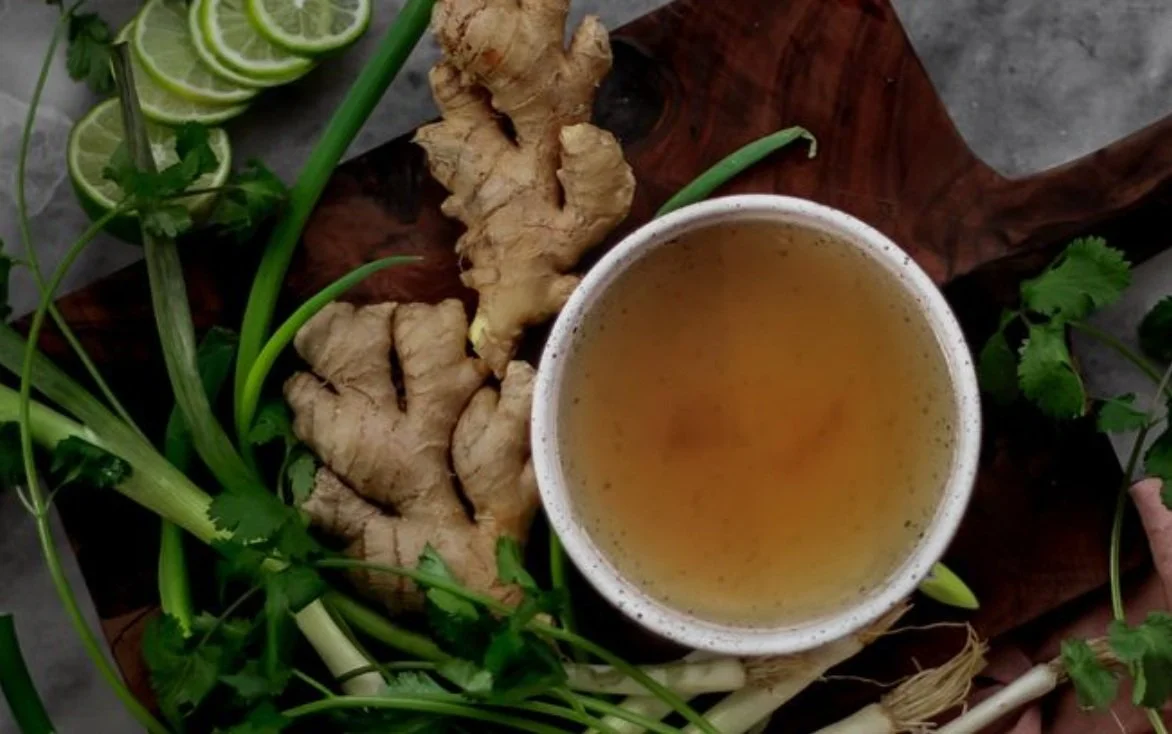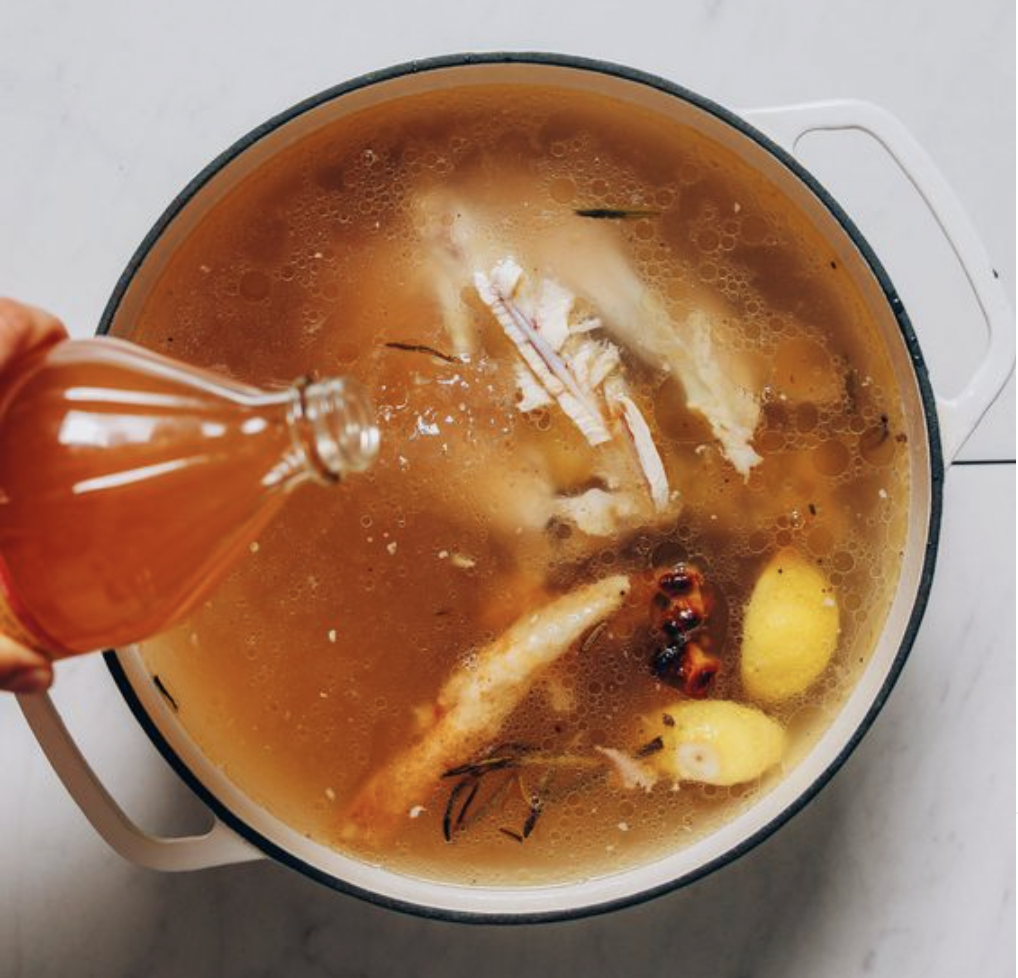Bone Broth Recipe
Bone broth is a nutrient dense liquid that has been consumed for thousands of years before it became the trendy drink known today. It is the most affordable and accessible health food to enrich any diet. It is made by roasting and boiling bones of almost any vertebrate (commonly poultry, beef, lamb, pork or fish) for 5–25 hours with additional herbs, vegetables and spices for flavour. This process extracts essential nutrients from the bones which would otherwise be discarded.
Historically, the likes of hunter gatherers didn’t have the luxury of throwing any substances out that had potential to provide nutrition, warmth or some other use. They utilised the entire animal in a manner of nose-to-tail eating, savouring every possible edible part and similarly utilised every plant scrap. Something we have moved far away from.
Bone broth contains many beneficial nutrients that support a number of key areas. In particular, gut health, skin and joints. They key constituents found in most broths include:
Glucosamine
Chondroitin
Hyaluronic Acid
Collagen/gelatin
Amino acids
Minerals - in particular potassium, calcium, phosphorus and magnesium
Gut Health:
Many of these components feed the lining of the intestinal tract, addressing and preventing leaky gut and creating a good environment for a healthy microbiome to grow.
Skin Health:
The nutritional properties that are related to connective tissue are largely responsible for why bone broth is beneficial for the skin. In particular collagen has been demonstrated numerous times to support the health of the skin. The skin is also a reflection of the gut and so the gut supporting properties of broth are translated to the skin as well.
Joints:
Because many of the constituents of bone broth are from cartilage and key components of joints it provides the building blocks to support these areas structurally. Many of the amino acids within bone broth are also anti-inflammatory.
Bone broth can be incorporated as much as possible! I would encourage you to have it a few times a week, if not daily. While it’s become a luxury item when bought due to the popularity of it, it can also be very affordable when made at home - and largely made from waste products.
MAKE BONE BROTH
Saving up bones in your freezer is the easiest and most affordable way to make bone broth. I typically combine these with whatever old veggies I have in the freezer and bang it in the crock pot for a 24 hour period. You can follow the below recipe/formula to produce a delicious broth!
Personally I enjoy drinking chicken broth by the cupful! The likes of beef broth is not always so palatable on its own but works so well in soups and stews or just to cook rice and quinoa in.
The goal is that the broth is gelatinous or wobbly once cooled - a great sign of a good collagen/gelatin content! If you aren’t achieving this you’ll need to either add more bones or cook them for longer - or perhaps both.
Ingredients:
The following ingredients I think are essential to a good broth:
Bones from any animal - raw or already cooked e.g. a leftover chicken carcass
2-3 chicken carcasses
~1kg of bones → chicken, lamb, beef, venison, fish
1 onion chopped
2-3 cloves of garlic
3 Tb apple cider vinegar
Enough water to cover the bones
1-2 tsp salt
Pepper
The next set of ingredients are just an added bonus for additional flavour and nutrition:
Herbs of any kind
Old vegetables or stems e.g broccoli stems, potato peelings, carrots, celery
Ginger and turmeric root
Whole lemon chunks
Instructions:
Combine all ingredients into a pot on the stove or into a crockpot.
If you’re using a crockpot you can let the bones simmer on low for 24 hours.
If you’re using the stove bring the mixture to a boil and leave for at least a few hours - the longer the better for a good brew.
Once done strain and store in glass jars in the fridge to use or the freezer to store.
Uses:
Drink by the cup full
Cook your rice/quinoa in it
Cook vegetables in it
Use as a base in stews and soups


